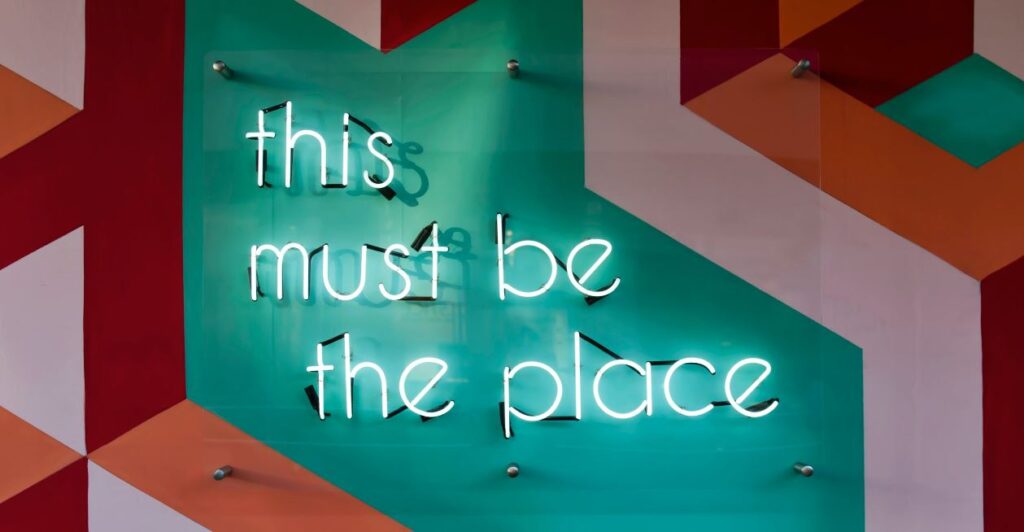In the vast world of business, the art and science of signwriting play a pivotal role in steering the consumer’s journey, oftentimes serving as the first point of interaction between a brand and its potential customers. Signwriting, fundamentally, is the craft of creating customised signs to convey a specific message or value proposition, with roots tracing back to ancient civilisations where signs were utilised to denote trades and services. At the intersection of this age-old craft and modern consumerism lies a fascinating exploration of the psychological underpinnings that make signage an influential element in customer behaviour.
Understanding the nexus between psychology and signage unlocks a treasure trove of insights into how businesses can effectively communicate with and influence their audience. From the vibrant hues on a storefront sign invoking specific emotional responses to the subtle nuances of typography that can either invite or deter a passing glance, every aspect of signwriting holds the potential to shape perceptions and drive actions.
In this blog post, we will delve deep into the colourful palette of signwriting and consumer psychology, unravelling the threads that connect the two and exploring how the former can be artfully used to influence the latter. Join us on this journey as we uncover the secrets behind the psychology of effective signage and shed light on how businesses can harness this knowledge to leave a lasting imprint on the minds of their customers.

The Impact of Colors
Colours possess a remarkable ability to evoke emotions, convey messages, and create varied psychological responses. The emotional response to colours is deeply ingrained in our psyche. Red can evoke passion or urgency, blue can induce calmness and trust, and yellow can signify happiness or caution. Research has shown that colour can significantly affect mood, feelings, and even physiological reactions, making it a powerful tool in shaping consumer perceptions and behaviours.
Moreover, the associations with colours can vary significantly across different cultures. For instance, while white is often associated with purity and innocence in Western cultures, it symbolises mourning in many Eastern cultures. Recognising and understanding these cultural variances is crucial for businesses aiming to communicate effectively with a diverse customer base.
Businesses leverage the influential power of colour in signage to guide customer behaviour. By employing specific colour combinations, companies can create strong brand recognition, encourage purchases, and even influence the perceived taste of food. A well-known example is McDonald’s, with its red and yellow colour scheme, which is recognisable worldwide and, stimulates appetite and evokes feelings of happiness and warmth.
Several case studies underscore the impact of colour in signage. For example, a study found that changing the colour of a call-to-action button on a website led to a significant increase in conversions, demonstrating the immediate and tangible effects of colour on consumer actions.
Typography and Readability
Typography is a subtle yet crucial element in the arsenal of every professional signwriter. The choice of font can greatly affect readability and the subsequent impact of the message. Serif fonts, characterised by small lines attached to the end of a stroke in a letter or symbol, are often perceived as more formal and traditional, while sans-serif fonts are seen as modern and clean.
Different fonts can evoke different psychological responses, impacting the viewer’s perception of the brand or message. For instance, a script font may convey elegance and sophistication, while a bold, blocky font may communicate strength and stability.
Effective font usage in signage is evident in successful brand logos and advertising campaigns. Brands like Coca-Cola and Google have utilised typography to create memorable and impactful brand identities. However, common mistakes such as using hard-to-read fonts or cluttering the design with multiple typefaces can lead to ineffective signage.
By adhering to best practices, such as prioritising readability, maintaining consistency, and matching the font to the brand personality, businesses can optimise their signage to effectively communicate their message and leave a lasting impression on the audience.
The Use of Imagery and Icons
Imagery is a potent element in shaping consumer behaviour. Images can convey complex messages instantly, often more effectively than words. They can evoke emotions, create desires, and influence purchasing decisions. The psychological impact of images is diverse, with different types of images eliciting different responses. For example, human faces in advertisements can create a sense of connection and trust, while food imagery can trigger cravings and hunger.
In signwriting, the strategic use of images and icons can significantly enhance the effectiveness of the message. With their ability to convey information quickly and universally, Icons are invaluable in creating recognisable and accessible signs. Real-world applications include traffic signs, utilising imagery to communicate quickly and clearly, and brand logos, where icons are central to brand identity and recognition.
Case studies demonstrate the success of imagery in signage, such as Apple’s iconic logo, which has become synonymous with innovation and quality, and Nike’s swoosh symbol, representing movement and progress.
Size and Placement of Signage
The size and placement of signs are pivotal in determining their visibility and impact. Larger signs naturally attract more attention, but size must be balanced with aesthetics and the surrounding environment. Placement is equally crucial, as signs must be located where they are easily visible and at eye level to maximise impact.
The psychology behind size and placement is rooted in the human visual perception system. Proportionate, balanced, and strategically placed signs are more likely to capture attention and leave a lasting impression.
Determining the right size and placement for signage involves considering the surrounding environment, the target audience, and the intended message. Businesses must also be wary of common pitfalls, such as overcrowding the space with information or placing the sign too high or low.
Strategies for effective signage include:
- Conducting visibility tests.
- Considering the viewing distance.
- Adapting the size and placement based on the specific context and objectives.
By optimising these elements, businesses can ensure their signs are impactful, memorable, and effective in influencing customer behaviour.
The Role of Lighting and Movement
Lighting is an elemental force that significantly influences mood and behaviour. The strategic interplay of shadows and light can invite and warm or alienate and chill. Techniques such as backlighting and contrasting can enhance visibility and create a memorable impression. At the same time, the colour temperature of light can evoke different emotions – warm lights induce comfort, while cool lights project modernity and efficiency.

In the dynamic landscape of signage, the movement is an attention-grabbing tool. Dynamic signs, through clever animation and change, captivate attention more effectively than static signs. Movement creates a sense of urgency and excitement, catalysing engagement and encouraging action, thus significantly influencing consumer behaviour.
Incorporating Brand Identity
Consistent branding is paramount in fostering customer trust and loyalty. Brand identity, distilled through logos, colours, and typography, acts as the face of a business. It communicates the company’s values and personality, creating a recognisable and trustworthy image. When incorporated effectively in signage, these elements form a visual harmony that resonates with consumers and strengthens brand recall.
Several brands exemplify successful identity incorporation through signage. Starbucks, with its iconic mermaid logo and green colour palette, creates an image of warmth and community. Apple’s minimalist design and sleek aesthetics communicate innovation and premium quality. These case studies elucidate strategies for integrating brand elements into signage, creating a cohesive and impactful visual narrative.
Measuring the Effectiveness of Signage
Evaluating signage effectiveness necessitates the use of Key Performance Indicators (KPIs). Metrics such as customer engagement, conversion rates, and brand recall provide insights into the impact of signage on consumer behaviour. Methods like surveys, sales data analysis, and observational studies offer a multifaceted view of signage performance, informing future strategies.
Informed by KPIs, businesses can adapt and refine their signage. This continuous improvement cycle, characterised by evaluation, adaptation, and reevaluation, ensures that signage remains relevant, effective, and aligned with evolving consumer preferences and market trends.
In the intricate dance of consumer interaction, signage is a silent yet powerful conductor. The amalgamation of colour, typography, imagery, size, and placement, underpinned by the nuanced influence of lighting, movement, and brand identity, crafts a visual symphony that shapes perceptions, elicits emotions, and drives behaviours.
As we gaze into the future, the evolving landscape of signwriting and consumer psychology promises continued innovation. Advances in technology and deeper insights into human behaviour will further refine the art and science of signage, enhancing its ability to connect, communicate, and convert.
Understanding the psychology of effective signage is invaluable for businesses seeking to leave an indelible mark on the consumer’s mind. It’s a journey of visual storytelling, where every element, every nuance, and every subtlety is a brushstroke in a larger masterpiece. This masterpiece can influence perceptions, inspire actions, and forge lasting relationships. In this exploration, we find the harmonious convergence of art, science, psychology, and commerce – a tapestry woven with the threads of human connection and the timeless dance of buyer and seller.
